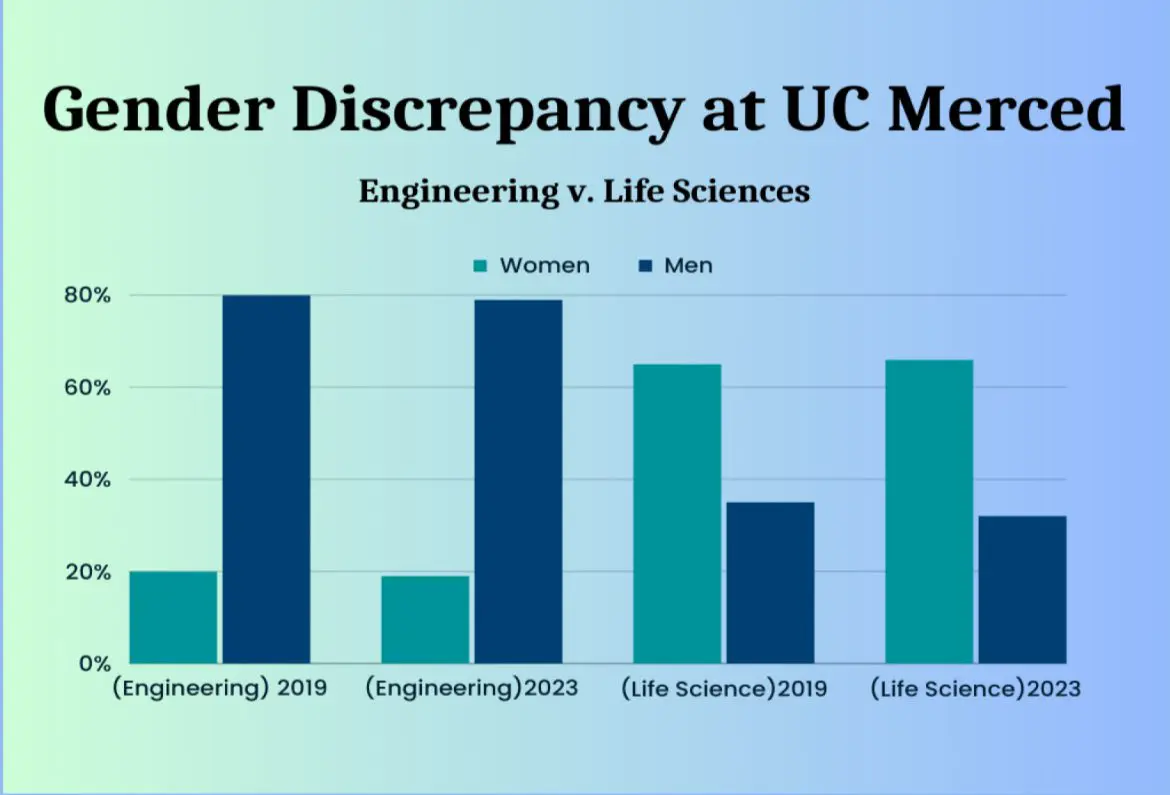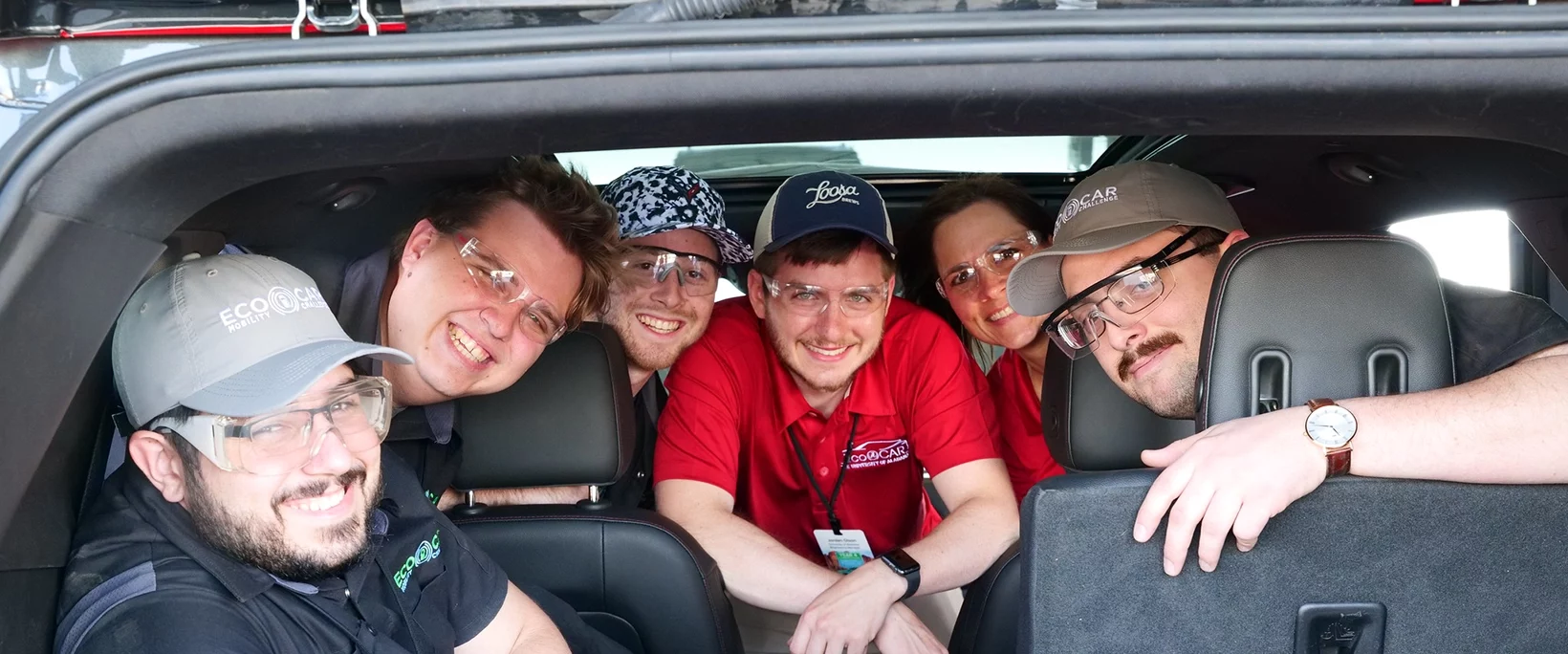By Emily Pu and Anna Riley
The battle with gender discrimination seems like a perpetual cycle, particularly in STEM fields. Recently, however, people have begun to speak out more about the lack of women in STEM and understand how intersectionality affects their participation in important scientific endeavors.
What is intersectionality? It’s a way to describe the various overlapping social identities that constitute an individual – including gender, race, and class. A person’s intersectionality may cause them to endure discrimination and bias. Women in STEM, especially women of color, are not always given the same opportunities as their male counterparts.

At the University of California, Merced, the gender gap in STEM varies widely by field. According to the university’s enrollment data, in 2023, the ratio of men to women majoring in engineering was approximately 4 to 1. However, there are approximately twice as many women majoring in the life sciences as men. As thie Gender Discrepancy at UC-Merced chart shows, these numbers have remained relatively constant with respect to enrollments in 2019.
Fortunately, UC-Merced has acknowledged this issue and developed diverse methods for women to explore various avenues in STEM. To learn more, we talked with Berrydal Moshe and Anna Riley, both are UC-Merced undergrads and active members of the UC-Merced & Merced College Battery Workforce Challenge team.

Berrydal Moshe is the thermal management lead for the UC-Merced & Merced College BattChallenge team and a UC-Merced undergrad studying computer science and engineering. She has noted the small percentage of women in her courses.
“There aren’t many women in my STEM classes, so the learning environment is different” Moshe said.
Nevertheless, Moshe enjoys her classes and particularly the hands-on experiences.
“When integrating software and hardware, you can immediately see the outcome of your work,” Moshe said.
The gender gap in STEM begins in school systems where girls are steered in a different direction to pursue other alternatives. Moshe provided insight into potentially pushing against this systematic approach.
“Institutions need to give more encouragement to women who are thinking of going into a STEM field,” Moshe said. “It begins before the workplace where women need to know that STEM fields are an option for them.”
We enter college with preconceptions of how a STEM student should appear, and those around us often reinforce those ideas.

Anna Riley works in communications on the UC-Merced & Merced College Battery Workforce Challenge team and isa UC-Merced undergrad studying biology. In Riley’s experience, there are sometimes more women than men in her biology classes. She feels fortunate to have not experienced much different treatment from that of her male peers in STEM.
“At UC-Merced, everyone is so nice and welcoming,” Riley said.
When asked what advice she would give other women in STEM, Riley focused on the importance of teamwork.
“If you’re really not understanding something, there are probably other people not getting it either,” Riley said. “It’s easier to figure it out together.”
She clarified this advice isn’t just for women in STEM; it can help anyone studying any subject. Sometimes, it’s a matter of being brave enough to ask a question.
“Many times, I’ve come into discussion with a question and learned that another classmate had the same question,” Riley said.
Riley joined the Battery Workforce Challenge as a communications team member because science communication is a crucial part of her research field of public health.
“Better communication makes science engaging,” Riley said.
The Battery Workforce Challenge allows students like Moshe and Riley to cultivate their skills by promoting the fundamental values of diversity and equality.
While Moshe hopes to expand her knowledge by pursuing the robotics industry and technological advancements, Riley plans to pursue medical school with a focus on public health.
By participating in the Battery Workforce Challenge and studying at UC-Merced, individuals are prepared to achieve their academic and career goals, regardless of their gender.




